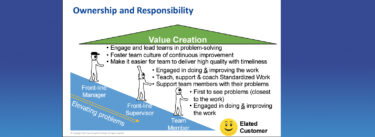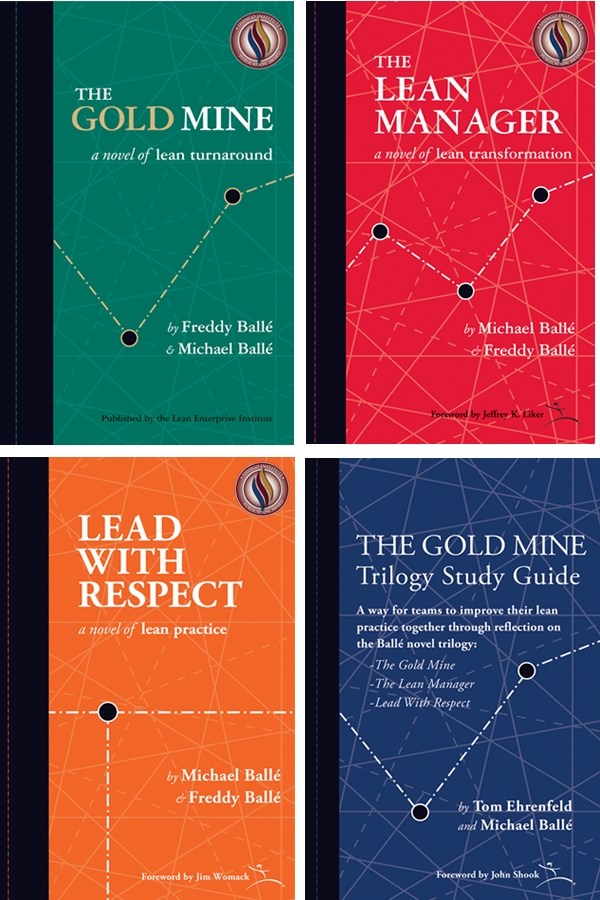He probably didn’t ask for a problem of quite this magnitude, but like it or not, Akio Toyoda has his crisis. Akio took the reigns with a proclamation that he wanted to change the company, to rid it of (his words) “pervasive hubris and arrogance” or, (my words) the same Big Company disease that he saw grip GM so deeply for so long. For about a year now Akio has been saying that he wants to take the company “back to basics.” No less an authority than Taiichi Ohno said you need a crisis to truly embrace TPS. So, Akio has his opportunity.
As always with things like this (Toyota’s crisis, if it doesn’t go without saying) it’s not the crisis; it’s how you respond to it. So far Toyota hasn’t responded well. The company will pay a price for that. But, if they problem-solve their way out of the quality and cost issues, the public may forgive them quickly enough.
Murphy on Steroids
Things can and do go wrong for any company. Yet Toyota has a special relationship with problems. The company has thrived for years by developing an obsessive focus on continuous improvement and problem solving. In Japan, they call Toyota people “problem-solving junkies.” If any company can get to the bottom of an issue like this, a problem like this, it’s Toyota.
The first thing they have to do is protect the customer. For whatever reasons, through whatever set of complex circumstances, they have failed their customers. I know that fact is absolutely excruciating to the leaders of the company now. Secondly, they have to take care of their dealers, so that the dealers can take care of the customers.
Thirdly, the company must turn its attention back to itself, to examine the root causes of what has happened throughout this entire episode. Toyota must conduct this investigation on two levels. First it has to confirm the specific technical cause or causes. People have died here. The company tells us it has figured that part out. Secondly, it must look at itself deeply and ask whether there is something more systemic going on: is there something deeper inside us as an organization that has allowed this to occur? Knowing the company as I do, there is no question in my mind that it will go through this reflection, this deep self-examination.
If Toyota finds something seriously awry deep inside the company that it has become, will its people be able to resolve the issue? After all, human organizations are imperfect. Maybe even … yours. The question is, can we look at ourselves honestly, challenge ourselves at the deepest levels, and try to take ourselves – as imperfect humans who work in imperfect organizations – to higher, better levels? Toyota has done that in the past. Toyota has shone a light on ways that a human organization can work at levels never seen before. So, if any company can do it in the face of a crisis such as this, I think Toyota can. But, we shall see. It is up to them.
First: Protect the Customer
We all know how this works in the factory. When you encounter a problem, your first responsibility is to protect the customer – in the factory this is the following process, the immediate downstream worker. That means, before you “encounter a problem” you have to know how to spot a problem, you have to know what a problem is. Then you need to know exactly what to do, what action to take, once you’ve spotted one. That action is to call for help, for someone to come help you decide what to do. Those two actions together are known as “stop and notify.” Then you need to know what will happen next (if you expect to be blamed, you probably won’t be eager next time to “stop and notify”!). So, what will happen is that someone (your team leader) will come to your aid. He or she will take a look and make a quick decision of whether to (1) apply a quick remedy, (2) stop the line, or (3) let it go through marked for remedy later (with 1 or 2 being BY FAR the preferable alternatives).
Having handled the immediate problem, the next step will be to stop and ask if there is a deeper root cause to investigate: Is this a repeating problem, is there a pattern to its occurrence, does engineering need to be notified? And so on.
That’s in a factory.
The same sequence of steps is playing out now for Toyota with their massive accelerator, floor mat, sudden acceleration crisis. Right now, they are in the “stop and contain the problem to protect the customer” phase. They must protect the customer and take care of the dealers so the dealer can take care of the customer (reminiscent of the principle laid down by Shotaro Kamiya, developer of Toyota’s approach to sales & marketing: “Customer first, dealer second, company third!”). Separately, they will need to go back and thoroughly analyze exactly what happened and why
Slow to Respond …
Toyota’s response to the gas pedal, floor mat, sudden acceleration problem has been slow and curiously ambiguous. What sounds simple enough on the surface (gas pedals and floor mats for crying out loud) has turned into a massive crisis for the company. One would think that if a simple mechanical fix could fix it, the company would have already done what it needed to do. Now additional technical issues are being raised.
Scrutiny of problems attributed to the accelerator pedal and floor mats is leading to scrutiny of the ETCS-i system it has used for the past eight years and could even lead to scrutiny of the electronic controls on vehicles going back even further. And that is an issue that is far too messy to want to deal with in the midst of a media circus like this.
Regardless, the result is that since Toyota failed to respond adequately in a timely manner to the acceleration problem, the company now finds itself in a credibility crisis. EMI has been a smoldering issue for the entire industry for a long time. Whether Toyota’s sudden acceleration crisis trail leads to EMI is yet to be determined. But the underlying problem with EMI (as I understand it) is that it is indeed problematic and no one fully understands it. Not just Toyota, no one in the industry.
Credibility
Sounds like a long way from floor mats. And, technically, it is. But, perception is now one of the most important matters at play here – perception and reputation and credibility. And credibility along with the trust it has engendered with its customers has been Toyota’s greatest strength. That credibility and associated trust equity has carried them a long way. But, now the company is expending much of that equity. It may come down to, “What did the company know and when did it know it?”
So, Akio has his crisis.
Crisis gives occasion to greatness. Without the crisis of 1950 and Toyota’s determination to be the best in spite of its disadvantages, Taiichi Ohno would have been just another good production manager, remembered fondly by those who worked for and with him, not revered throughout the global manufacturing world. All accounts are that there was nothing to indicate that Abraham Lincoln would be a great leader – it took a national crisis to bring out the greatness.
Akio was born the year before his company first tried and failed to sell cars in the US. Those cars were so bad – they couldn’t sell them and they weren’t worth sending back to Japan – they ended up dumping a bunch of them in the Pacific Ocean.
So, for Akio now, this is his crisis. And his opportunity.
john
John Shook
Senior Advisor
Lean Enterprise Institute






